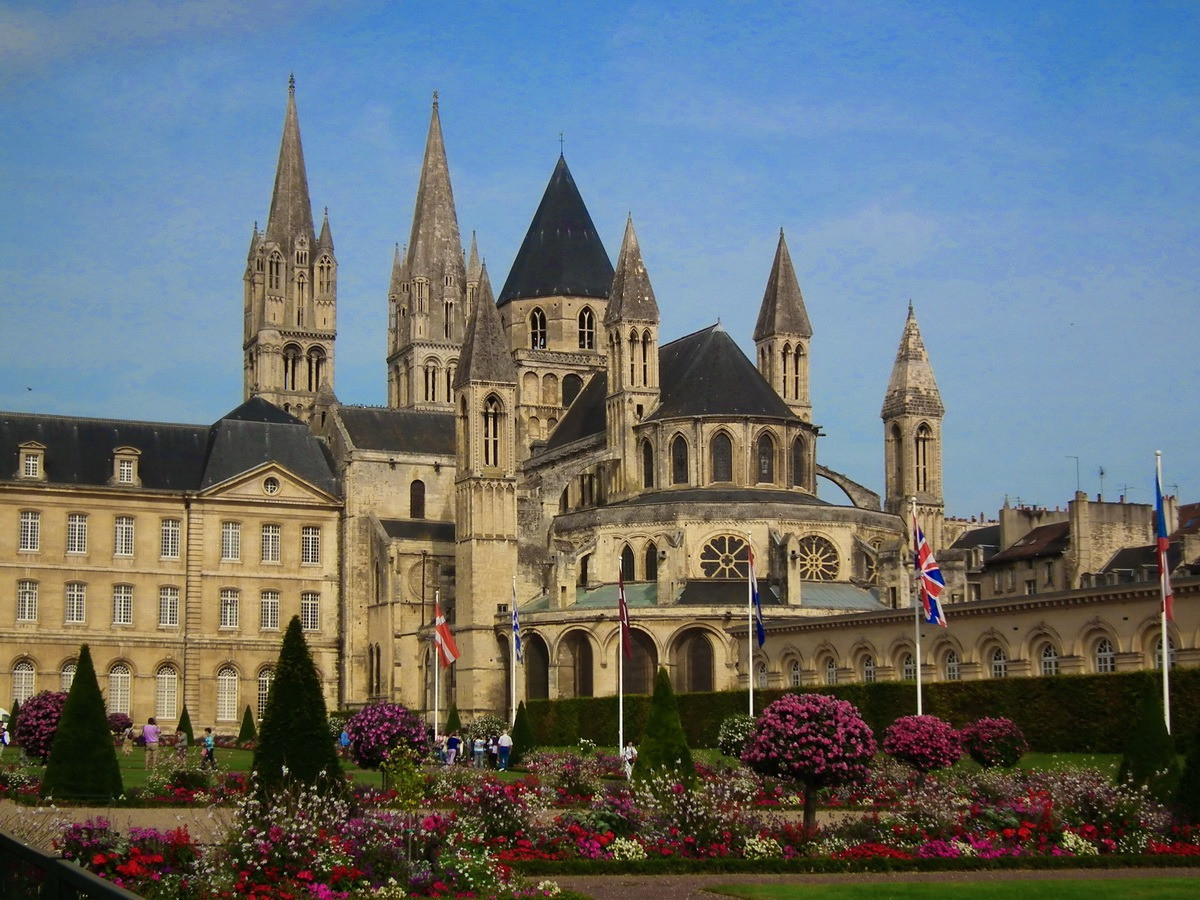1. Caen Castle
During your stay in Caen, don't miss the Château Ducal in the heart of the city center. Built around 1060 by William the Conqueror, this prized residence of the Dukes of Normandy has evolved over the centuries, from royal fortress to conscript barracks.
The impressive estate, which was bombed during the Second World War, has since been restored and features a new reception pavilion, as well as a renewed tour program.
The Château de Caen is now home to the Musée des Beaux-Arts and the Musée de Normandie. From the ramparts, you'll enjoy a breathtaking view over the city's rooftops.
2. Ladies' Abbey
Caen's nickname of "City of a hundred steeples" is due above all to its many religious buildings. The Abbaye aux Dames was founded by Mathilde de Flandre, Duchess of Normandy and Queen of England.
The Abbaye aux Dames is the counterpart to the Abbaye aux Hommes. William the Conqueror's wife is laid to rest in the heart of the Eglise de la Trinité, which also bears witness to the beauty of Romanesque art. The 11th-century crypt is an outstanding feature of this jewel of Norman heritage.
3. The Men's Abbey
The Abbaye aux Hommes is another of Caen's architectural masterpieces. Its construction began on the initiative of William the Conqueror in 1063 and was not completed until the 13th century. The building is a historic monument that blends Romanesque and Gothic aesthetics.
The church is the oldest part, and the choir houses the tomb of the Duke of Normandy and King of England. The monastic buildings now house the town hall. Town council meetings are held in the Salle des Gardes.
The Abbaye aux Hommes also housed medieval dwellings, of which an apple press, a carriage house and a bakery remain. The Ducal Palace houses the Artothèquea space dedicated to contemporary art.
4. Place Saint-Sauveur
Together with the Abbaye aux Hommes, Place Saint-Sauveur forms a remarkable heritage ensemble. Also known as the "Place du Vieux Marché Saint-Sauveur", don't miss Caen's oldest square in the historic district.
Every Friday, the cobblestones come alive with the stalls of the local market. The spectacle at dusk is also worth the detour, when the square's facades light up.
On Place Saint-Sauveur, you'll also find the imposing statue of Louis XIV as a Roman emperor, a listed historic monument.
5. Timber-framed houses
In rue Saint-Pierre and rue de Geôle, a handful of half-timbered houses still bear witness to medieval architecture.
The Maison des Quatrans is listed as a Monument Historique. The old hotel is a half-timbered house built in the 1460s, with a half-timbered façade on the street side, as was often the case in Caen in the Middle Ages. In fact, the abundance of stone in Caen, coupled with the high level of quarrying activity, limited the use of wood in construction to a purely aesthetic aspect.
6. Leroy Tower
The Tour Leroy is one of the remains of Caen's medieval fortifications. Erected in the 14th century, not far from the Château de Caen and Saint-Pierre church, the tower originally served as a command post. Before the opening of the river in 1860, it stood on the banks of the Odon, protecting access to the port.
Before becoming a storage facility for the community, the 18-meter-high tower also served as a prison for smugglers. The cylindrical architecture reveals four levels, including a platform at the top. Enjoy the beauty of the Caen stone, quarried from the city's subsoil, used in its construction.
7. Caen Memorial
The Caen Memorial is an essential site for understanding the history of the Second World War, D-Day and the Battle of Normandy. Housed in a former German bunker, it offers an immersion into these momentous events through period artefacts, photographs and archive videos. The museographic tour evokes the tragic realities of war, while highlighting the stories of D-Day and the post-war period.
After your visit, you can extend the experience by following the tour of the D-Day beaches, accessible from Caen. These emblematic sites, such as Sword Beach, Juno Beach and Omaha Beach, preserve the code names of the Allies and bear witness to the history of the liberation of France.

